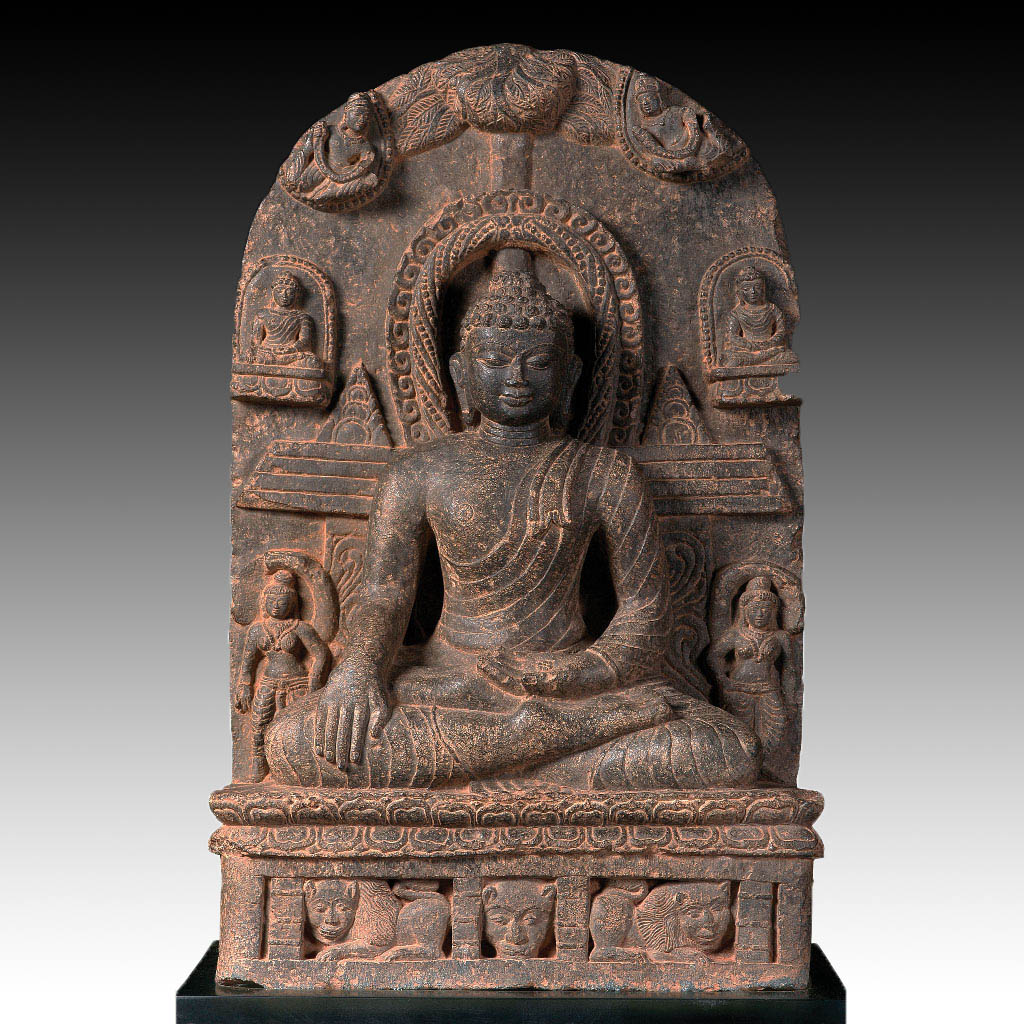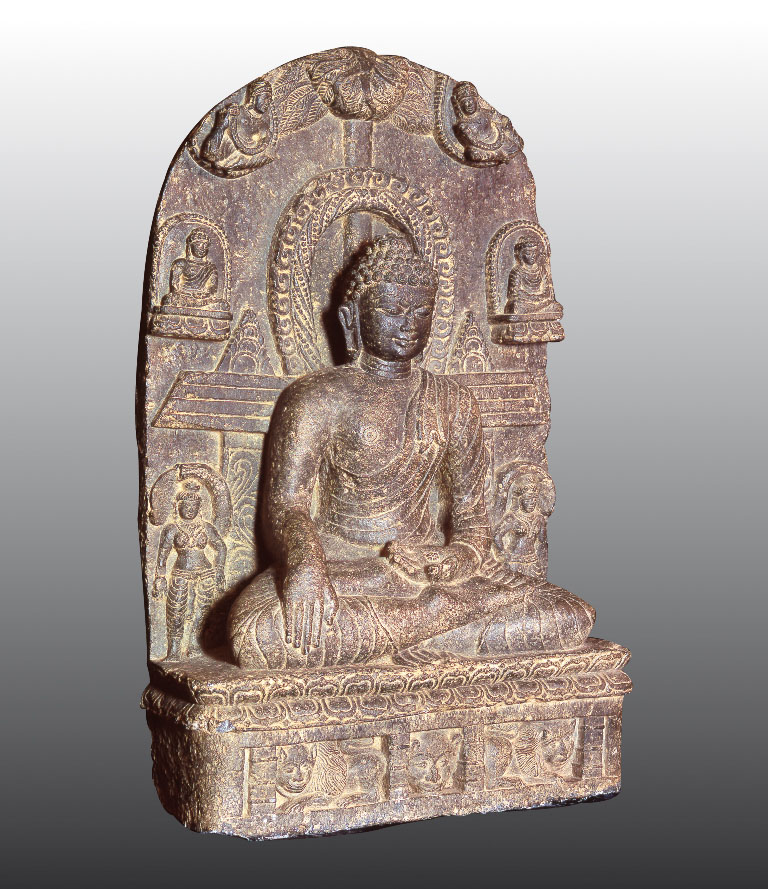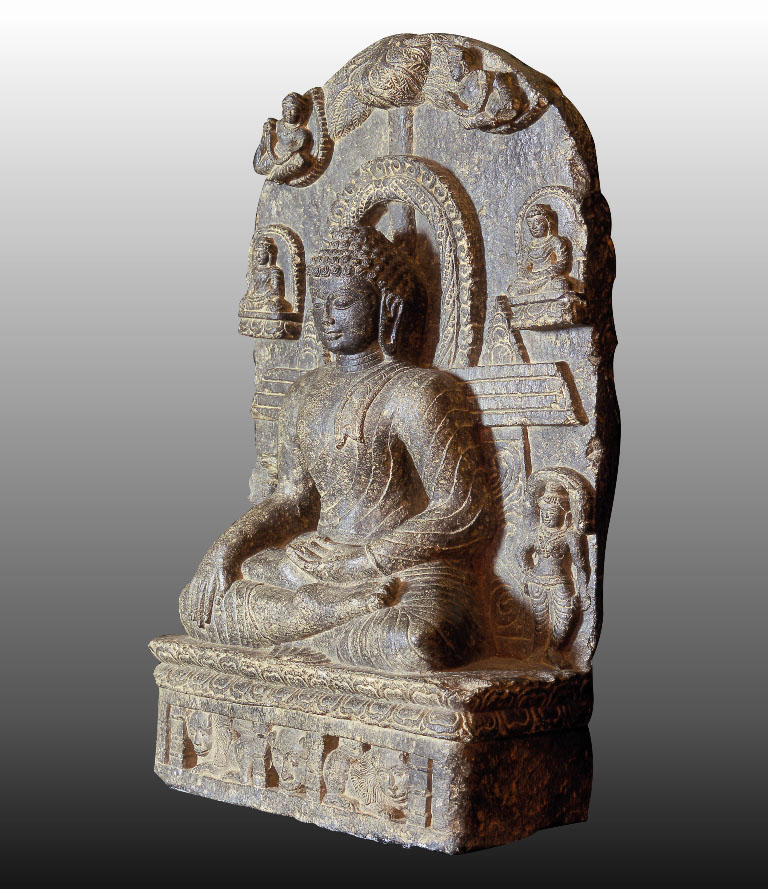|
|
«« go back
Shâkyamuni
Northern India - Basalt - Height 92 x 57 x 22 cm - 11th century - Pala P.
The historical Buddha, Shâkyamuni, is represented here at the most important moment of his life, immediately after Enlightenment, which he attained under the bodhi tree (Ficus religiosa) in the shade of which he had found shelter, taking the oath that he would not get up until he had attained fulfillment. This image depicts Shâkyamuni in the gesture of touching the earth (bhûmisparsha- mudrâ) with his right hand, calling upon it to testify that crucial event. Said gesture reminds the believer that Enlightenment, or Awakening, is not a moment of mystical bliss but rather a conscious experience in which Shâkyamuni was alert and in touch with everything sur- rounding him.
Two flying nymphs (Apsarases) are carved on either side of the bodhi tree, bearing garlands of flowers as tokens of homage. Two Buddhas are depicted above the throne, whilst there are two standing Yakshinîs lower down. Such tree godesses, related to ancient Indian pre-Buddhist cults associated with fertility and abundance, stand near two trees with their trunks bent around them.
In this image Buddha is seated on a lotus, the petals of which are turned both up and down, a characteristic which appeared in northern Indian sculpture as of the 10th century (1). The type of halo surrounding Shâkyamuni’s head, reminding the observer of a twisted string of beads – also visible in a sculpture produced in Bihar in circa 850 C. E. 2 –, the little flames shaped like curls which surround the halo, the two sets of flaming Triratna (Three Jewels) resting on the throne back at the sides of the Buddha, and the structure itself of the throne are typical elements of the art produced in Bihar during the Pâla dynasty between the 10th and 11th centuries 3.
(1) Pratapaditya Pal, Indian Sculpture, vol. 2, Los Angeles Coun- ty Museum of Art in association with University of California Press, Berkley, Los Angeles, London 1988, p. 168, fig. 75. (2) Ibidem.
(3) Susan L. Huntington - John C. Huntington, The Art of Ancient India, Weatherhill, Boston and London 2001, p. 397, fig 18.10 and p. 461, fig. 20.15.
For a similar sculpture : New studies into Indian and Himalayan sculpture Pages 38-39 No.55 Armand Neven Exhibition at de ruimte eersel nb Holland Spink & Son Ltd. – Jean and Marcel Nies May 1980
ALC (Free Circulation)
|


